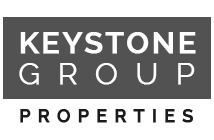For information on properties in Southern California— San Diego County coastal real estate and Marina Del Rey beach homes , call Bob Cumming of Keystone Group Properties at 310-496-8122.
If you are thinking about filing bankruptcy, this page will provide general information about a Chapter 7, Chapter 11, and Chapter 13 Bankruptcy. It will help you understand what the law allows. We would be happy to refer a bankruptcy attorney to you for further consultation.
WHAT IS CHAPTER 7 BANKRUPTCY?
One of the main purposes of Chapter 7 Bankruptcy is to give a person who is hopelessly burdened with debt a fresh start by wiping out most debts. A Chapter 7 Bankruptcy is a liquidation proceeding. The debtor receives a discharge (elimination) of all dischargeable debts usually within four months. Note that some debts, listed below, are not dischargeable. The debtor turns over all non-exempt property to the bankruptcy trustee who then converts it to cash for distribution to creditors. In the vast majority of cases the debtor’s assets fall within the exemption provisions, and he has no assets that he would lose, so Chapter 7 will give that person a fairly quick “fresh start.” To qualify for Chapter 7 Bankruptcy a person must meet the Means Test. He or she must gather information about his/her assets and liabilities, and apply the Means Test formula to them. Please Google “Chapter 7 Bankruptcy Means Test” for more information.
WHAT IS CHAPTER 11 BANKRUPTCY?
Chapter 11 Bankruptcy is known as a reorganization bankruptcy. Through a court approved Plan, a debtor may restructure obligations to creditors and pay them over time, or may liquidate assets to pay creditors. The debtor remains in control and does not turn over assets to the trustee.
WHAT IS CHAPTER 13 BANKRUPTCY?
Chapter 13 Bankruptcy is also known as a reorganization bankruptcy. Chapter 13 Bankruptcy is filed by individuals who want to pay off their debts over a period of 3 to 5 years. This type of bankruptcy appeals to individuals who have non-exempt property that they want to keep. It is also an option for individuals who have predictable income that is sufficient to pay reasonable expenses with some amount left over to pay off debts. To qualify for Chapter 13 Bankruptcy a person must: Reside, have a domicile, a place of business, or property in the United States, or a
municipality; Have a source of regular income; and on the date the petition is filed owe less than $360,475 in unsecured debts and less than $1,081,400 in secured debts. Note: The amounts are regularly adjusted to keep up with the cost of living. Google “Chapter 13 Bankruptcy Means Test” for current information. Corporations and partnerships may not file a Chapter 13 Bankruptcy. If you filed a prior Chapter 13 Bankruptcy and the prior proceeding was dismissed within the last 180 days, you may not be able to file a second petition and should check 11 U.S.C. sec. 109(g).
WHAT CHAPTER BANKRUPTCY — 7 or 11 or 13 — IS BEST FOR ME?
Chapter 7, Chapter 11 and Chapter 13 Bankruptcy Qualifications Compared:
Chapter 7 Bankruptcy: For individual debtors. There is an upper limit as to income (see Chapter 7 Bankruptcy Means Test), but no limit as to amount of debt. Chapter 11 Bankruptcy: For individual, corporate and partnership debtors. There is no limit as to income, and no limit as to debt. A debtor may “stretch out” payments to creditors with their consent beyond the 3 to 5 year time limit of a Chapter 13 Bankruptcy. Chapter 13 Bankruptcy: For individual debtors. There is an upper limit as to amount of unsecured and secured debt. Debtor is required to have a source of regular income, but there is no limit as to income. Debtor must pay creditors under the court approved Plan in 3 to 5 years. Debtors who qualify for both Chapter 11 and 13 may prefer to file under Chapter 13 because a debtor in a Chapter 13 is entitled to various procedural and substantive advantages, including a broader scope of discharge, than in a Chapter 11. Please consult a bankruptcy attorney about your particular situation to determine what is best for you. Keystone Group Properties dba Southern California Home Source would be happy to refer a bankruptcy attorney to you.
BEFORE FILING BANKRUPTCY, A CREDIT COUNSELING COURSE IS REQUIRED. HOW DO I FIND ONE?
At least five days before filing a Bankruptcy Petition (with exception for emergencies), you are required to take an approved Credit Counseling Course. It can be taken in person or over the phone. A list of approved credit counseling agencies may be found at the California Bankruptcy Court Central District’s (includes Los Angeles and Orange Counties) website: www.cacb.uscourts.gov click information, click Self Service Center, click Credit Counseling Courses. A list of approved credit counseling agencies also may be found at the United States Bankruptcy Court’s website: ww.uscourts.gov/federalcourts/bankruptcy click Bankruptcy Resources, click Approved Credit Counseling Agencies and Debtor Education Providers.
WILL FILING BANKRUPTCY HELP ME KEEP MY HOME?
Filing Chapter 7,11 or 13 Bankruptcy will delay foreclosure but will not stop it.
Chapter 7 Bankruptcy:
Filing a Chapter 7 Bankruptcy Petition will freeze foreclosure proceedings for a short time. The lender usually files for Relief from Automatic Stay and asks the Bankruptcy Judge to be able to proceed with the foreclosure. The Judge usually grants this request. Chapter 11 and Chapter 13 Bankruptcy and Loans on Debtor’s Principal Residence:
In a Chapter 11 and Chapter 13 Bankruptcy, a person obtains court approval of a Plan to pay creditors. The home loan or mortgage creditors on debtor’s principal residence would be a part of that Plan. If a debtor is not able to make payments, then there may be foreclosure, short sale, or deed-in-lieu.
“Lien stripping” in a Chapter 11 or Chapter 13 Bankruptcy:
“Lien stripping” may reduce the over-encumbered value of real property to current market value. It is only available for an individual debtor, not a corporate or partnership debtor. It is not available on a 1st trust deed on debtor’s principal residence. It possibly may be used on a 2nd trust deed, or on real property that is not debtor’s principal residence (2nd homes, investment properties, commercial property). “Lien stripping” described generally: the real property’s over-encumbered value is reduced to current market value; the amount that exceeds current market value is treated in the Plan like unsecured debt and may be reduced; debtor pays the current market value, the secured debt. In a Chapter 13, a debtor must pay creditors, including the secured debt, in 3 to 5 years. In a Chapter 11 Bankruptcy, a debtor has a longer time to pay creditors. Please consult a bankruptcy attorney for further information.
WHAT ARE THE MOST COMMON REASONS FOR A CHAPTER 7 BANKRUPTCY?
The most common reasons for a Chapter 7 Bankruptcy are: unemployment; large medical expenses; seriously overextended credit; marital
problems, and other large unexpected expenses. A Harvard Study reported that half of US bankruptcies were caused by medical bills
(MSNBC). The study was published online in February of 2005 by Health Affairs. The Harvard study concluded that illness and medical bills caused half (50.4 percent) of the 1,458,000 personal bankruptcies in 2001. The study estimates that medical bankruptcies affect about 2 million Americans annually – counting debtors and their dependents, including about 700,000 children.
WHAT DEBTS ARE ERASED BY A BANKRUPTCY?
Most unsecured debt is erased in a Chapter 7 Bankruptcy, or reduced in Chapter 11 and 13 Bankruptcies, except for: Child support and alimony; Debts for personal injury or death caused by debtor’s drunk driving; Government guaranteed student loans; Tax debt and money owed to government agencies.
Note on Private Student Loans: On June 7 2007, a US Senate Bill was introduced to make private student loans dischargeable in bankruptcy, as they were before 2005, so that again they would be fully dischargeable in bankruptcy. Please consult a bankruptcy attorney for the most recent state of the law.
More information about debt that may not be dischargeable and may survive bankruptcy:
The following debts are not erased in both Chapter 7 and Chapter 13. If you file Chapter 7, these will remain when your case is over. If you file Chapter 13, these debts must be paid in full during your Plan. If they are not, the balance will remain at the end of your case. Debts you forget to list in your bankruptcy papers, unless the creditor learns of your bankruptcy case.
Child support and alimony; debts for personal injury or death caused by your intoxicated driving; student loans from government organizations, unless it would be an undue hardship for you to repay; fines and penalties imposed for violating the law, such as traffic tickets and criminal restitution.Whether recent income tax debts and all other tax debts are dischargeable is a complicated area. Usually they are not dischargeable.
Please consult a bankruptcy attorney for more information. In addition, the following debts may be declared non-dischargeable by a
bankruptcy judge in Chapter 7 if the creditor challenges your request to discharge them. These debts may be discharged in Chapter 13. You can include them in your Plan, and at the end of your case, the balance may be wiped out.
Debts you incurred on the basis of fraud, such as lying on a credit application; credit purchases of $500 or more for luxury goods or services made within 90 days of filing; loans or cash advances of $750 or more taken within 70 days of filing; debts from willful or malicious injury to another person or another person’s property; debts from embezzlement, larceny or breach of trust, and debts owed under a divorce decree or settlement unless after bankruptcy you would still not be able to afford to pay them, or the benefit you’d receive by the discharge outweighs any detriment to your ex-spouse (who would have to pay them if you discharge them in bankruptcy).
WILL MY CREDITORS STOP HARASSING ME?
Yes, they will! By law, all actions against a debtor must cease once the Petition is filed. Creditors cannot initiate or continue any lawsuits, wage garnishes, or even telephone calls demanding payments. Secured creditors such as banks holding, for example, a lien on a car or a home loan, will get the stay lifted if you cannot make payments, and act to repossess or foreclose.
WILL MY SPOUSE BE AFFECTED?
Your wife or husband will not be affected by your bankruptcy if they are not responsible (did not sign an agreement or contract) for any of your debt. If they have a supplemental credit card, they are probably responsible for that debt. However, in community property states like California, either spouse can contract for a debt without the other spouse’s signature on anything, and still obligate the marital community. There are a few exceptions to that rule, such as the purchase or sale of real estate; those few exceptions do require both spouse’s signatures on contracts. But the day to day debts, such as credit cards, do NOT require both spouses to have signed. Please consult a bankruptcy attorney for more information. The following are community property states: Arizona, California, Idaho, Louisiana, Nevada, New Mexico, Texas, Washington and Wisconsin.
WHO WILL KNOW?
Bankruptcy filings are public records. However, under normal circumstances, no one will know you went bankrupt. The Credit Bureaus will record your bankruptcy and it will remain on your credit record for 10 years.
WILL I LOSE MY JOB BECAUSE I FILED BANKRUPTCY?
No. U.S.C. Sec. 525, prohibits any employer from discriminating against you because you filed bankruptcy.
WHAT DON’T I KEEP? HOW MUCH AM I ALLOWED TO KEEP?
In a Chapter 7 Bankruptcy, assets in excess of the allowed exemptions, or non exempt assets such as real estate and boats, will be liquidated by the trustee. Please Google “Chapter 7 Bankruptcy Exemptions” for more information. In a Chapter 7 Bankruptcy, you are allowed to keep certain assets, depending on the state in which you reside. Please Google “Chapter 7 Bankruptcy Exemptions” for more information.
MAY I KEEP ANY CREDIT CARDS?
Whether a debtor keeps credit cards after filing bankruptcy is up to the credit card company. If you are discharging a credit card, they will cancel the card unless you reaffirm the debt. Even if you have a zero balance, the credit card company might cancel the card.
WILL I EVER GET CREDIT AGAIN?
Yes! A number of banks now offer “secured” credit cards where a debtor puts up a certain amount of money (as little as $200) in an account at the bank to guarantee payment. Usually the credit limit is equal to the security given and is increased as the debtor proves his or her ability to pay the debt. Two years after a bankruptcy discharge, debtors are eligible for mortgage loans on terms as good as those of others, with the same financial profile, who have not filed bankruptcy. The size of your down payment and the stability of your income will be much more important than the fact you filed bankruptcy in the past. The fact you filed bankruptcy stays on your credit report for 10 years. It becomes less significant the further in the past the bankruptcy is. The truth is, that you are probably a better credit risk after bankruptcy than before. Please Google “build credit after bankruptcy” for more information.
WHEN WILL I BE DISCHARGED FROM BANKRUPTCY?
One of the major purposes of a Chapter 7 Bankruptcy is to erase debt and to give a person a fresh financial start. The debt is erased when he or she is discharged. This happens 3 – 5 months after the Chapter 7 Bankruptcy is filed. At that time all debts (with some exceptions) are written off.
I FILED CHAPTER 7 BANKRUPTCY BEFORE. WHEN MAY I FILE AGAIN?
A person may file Chapter 7 Bankruptcy again if it has been more than 8 years since he or she filed the previous Chapter 7 Bankruptcy.
IF I USE A CREDIT COUNSELOR, WON’T I GET A BETTER CREDIT RATING THAN IF I FILE BANKRUPTCY?
No, you will not. It will cost you less money and you will rebuild your credit rating faster if you file Chapter 7 or Chapter 13. Be cautious if you are considering using a credit counselor. Also read about the problems of unscrupulous companies in the credit counseling industry, and the action the IRS has taken against “non-profit” credit counseling groups following widespread abuse.
WHAT DOES IT COST?
It costs about $300 to file a Chapter 7 Bankruptcy. A bankruptcy attorney’s fees vary but should be in the range of $1,000 to $3,000. Many bankruptcy attorneys will give you a free initial consultation. You can keep the fees down by being well organized and well prepared. You may also be able to keep the fees down by not requiring your attorney to attend the Section 341 (a) Meeting of Creditors with you. The fees for a Chapter 11 or 13 Bankruptcy are higher. Please consult with a bankruptcy attorney about fees.





